We’re just barely two weeks into the season, and we’ve officially reached the most awkward part of the fantasy baseball year — the point at which it feels like there is data and you want to react to it, but you also know the data we have means almost nothing.
The challenge is there are players on your team struggling, there are trade offers to be made, there are free agents to pick up and you want to figure out who might be worth looking at.
One of the first things I look for with hitters early in a season is changes in approach, particularly in swing rates. It’s something the hitter has complete control over.
You don’t luck into high swing rates like you can luck into high BABIP or HR/FB rate. You don’t get stuck with high swing rates like you might get stuck with a high strikeout rate if you open the season facing the Yankees and their 11.33 K/9.
In addition, plate discipline stats stabilize relatively quickly. By 50 PA, swing rates are starting to stabilize; strikeout rates follow around 60 PA.
So we have a stat that is just starting to be meaningful and can be a reflection of an intentional change made by a hitter, which can sometimes explain other changes. A hitter being more patient or more aggressive might be part of a larger change, which might give you a reason to take a gamble on a guy (or not).
It’s also important to note that I am not necessarily hoping to find an increase or a decrease in swing rate. A high chase rate tends to be a problem for a hitter, but there are plenty of players who are very successful with a high swing rate, including players like Jeff McNeil, Ozzie Albies, Rafael Devers, and Tim Anderson.
What I am looking for is a change — something that signifies the hitter is doing something actively differently that might justify excitement (or concern) about changes in results.
I pulled plate discipline numbers for all hitters who qualified for the batting title in 2020 and are on pace to do so in 2021, and compared their swing rates in the two seasons. We’ll look at the four biggest gainers and fallers in swing rate coming into play on Friday, April 16.
Swing Rate Gainers
| Year | Swing % | Rank |
|---|---|---|
| 2020 | 46.2% | 76/142 |
| 2021 | 57.3% | 12/183 |
After being middle-of-the-pack in 2020, Adames has been among the most aggressive hitters in the game in 2021, and at a 25-game rolling rate that far outpaces anything he has done before. It doesn’t seem to be working for him.
His hard-hit rate hasn’t moved much but everything else looks a lot worse. His contact rates are about the same as they were in 2020, but he is chasing so many more pitches and swinging at so many more pitches that his whiff rate has jumped.
His strikeout rate hasn’t gotten any worse — the high swinging strike rate is counteracted by making enough contact early in counts to not get stuck with more strikeouts — but his strikeout rate was already really bad: 36.1% last year and 34.9% this year. In the meantime, his walk rate, which was a very solid 9.8% last year, has been cut down by more than half to 4.7%.
When he does make contact, his launch angle has jumped, and not in a “Launch Angle Revolution” way but in a “that’s going to lead to a lot of fly-ball outs” way.
The only player whose 2020 launch angle was even close to the 28.2 Adames has put up this year is Joey Gallo (26.8), and Adames does not have Gallo’s power. With all the strikeouts, Adames needs a high BABIP to be successful but that launch angle coupled with his drop in exit velocity is leading to a .250 BABIP from a guy who has a .344 for his career.
It’s possible that the increased swing rate is leading to more contact on pitches he can’t drive, resulting in more weak contact and worse results. His reliance on BABIP always made him a fragile fantasy player to me and his rough start has only confirmed that. It’s still early, but it seems like he made a change to his approach, getting more aggressive, with unhelpful results.
Adames was little more than a late flyer in most drafts, and I would be moving on.
| Year | Swing % | Rank |
|---|---|---|
| 2020 | 36.2% | 137/142 |
| 2021 | 48.7% | 66/183 |
This is a fun one because while the raw 2020 vs. 2021 numbers make it look like Votto has made big changes in his swing rate, the rolling 25-game graph of swing rate tells a very different story.
Across 2020 and 2021, Votto has had swing rates near his low points in 2019. In 2018, which I left off the graph to make it easier to read, Votto had higher highs and slightly lower lows. There is a clear upward trend early this year that is worth watching, but it looks like Votto is still his regular, patient self.
Kyle Horton did a deep dive into Votto’s swing (actually Votto’s swings, as he was looking at a swing change) and found that Votto was making better, harder contact, while also swinging just a bit more with his a more upright stance, leading to more power and better results.
This year, we are perhaps seeing the early stages of that more aggressive swing being back in full force and, if so, there is reason to be excited — Votto has his single hardest hit ball of the Statcast era this year (113.6 mph)
While Adames saw a lot of red turn into blue, Votto has seen the opposite. In the meantime, his results have been pretty bad. His 67 wRC+ is not at all what we expect from Votto, nor is his 3.9% walk rate.
But all I see is great contact and a guy who I am confident will draw plenty of walks. If there is a frustrated manager in your league unsure what to do with Votto, I would try to buy low. I suspect Votto is about to breakout.
| Year | Swing % | Rank |
|---|---|---|
| 2020 | 51.8% | 25/142 |
| 2021 | 62.9% | 3/183 |
Another case where the graph adds a lot of context. The yearly data suggests Castellanos got a lot more aggressive. The graph suggests 2020 was a bit of an outlier and that this kind of spike in his swing rate isn’t uncommon.
I went in detail on Castellanos in early February, and I don’t think there is a ton more to say. Towards the end of that article, I noted there was big upside for Castellanos based on the possibility that “the contact quality Castellanos has demonstrated since August 2019 is legit and the strikeout issues that didn’t show up until 2020 are just small sample size noise.”
So far this year, the more uptick in swing rate has helped bring down his strikeouts, in large part because he is making more contact. When you look at his Statcast data, the first glance doesn’t look great, as his barrel rate is down and his hard-hit rate is steady — given exit velocities appear to be up overall this year, a steady hard-hit rate represents a cause for concern.
But, as Alexander Chase pointed out recently, hard-hit and barrel rates can be deflated by players who make a lot of contact. And sure enough, Castellanos’s barrels per PA are up (from 9.9% to 10.9), as is his hard-hit/swing (from 14.0% to 19.2%).
Castellanos has always been an aggressive swinger and 2021 is no different. But he is absolutely crushing the ball right now, and there is some reason to believe he can keep this up. My guess is any fantasy manager who has him is happy to keep him, but I would be willing to buy high.
| Year | Swing % | Rank |
|---|---|---|
| 2020 | 36.2% | 137/142 |
| 2021 | 47.3% | 82/183 |
For the second time, we will look at an aging 1B who made his name being incredibly patient while playing in the state of Ohio.
For the second time, the graph seems to give credence to the idea that said first basemen is meaningfully more aggressive than he has been in the past. But there is another level to look at here and it is more concerning.
While his overall swing rate is high, his rolling chase rate has hit a height it hasn’t hit since 2015 — and that it hit for just one day in 2015. And if you look at a rolling 11-game stretch, 2021 is easily his worst stretch since at least 2014.
At first glance, his 16.7% walk rate suggests his vaunted plate discipline is still there, but his strikeout rate is a career-high 20.8% and that big jump in chase rate doesn’t give me much confidence that he can maintain the walks, especially when coupled with a career-high swinging strike rate.
That said, BABIP is low and while he will never post a high BABIP, .143 is a bit crazy, even by his standards. I was hoping for a bounceback from Santana after a rough 2020 and while I think he will do better than his current like the rest of the way, I am no longer confident he can regain his lost form.
It’s looking more like 2019 was the last hurrah than a resurgence, and I suspect something around his 2020 or maybe his 2018 is what we should expect. As a 1B, that won’t be enough.
Swing Rate Fallers
| Year | Swing % | Rank |
|---|---|---|
| 2020 | 47.6% | 54/142 |
| 2021 | 36.6% | 179/183 |
Whether from the data or the graph, it is clear that Contreras is a lot more patient lately than he has been previously. Late in 2019 and early in 2020, Contreras got a bit aggressive, but he has found his patience and the results appear to be great, as his 128 wRC+ is right in line with his great seasons in 2016, 2017, and 2019.
Interestingly, Contreras seems to go as his fly balls go. His BABIP is down a bit this year but has been pretty steady in his career (.307 to .339 before this year), as have his strikeout (22.2% to 25.3%) and walk (8.9% to 10.5%) rates. But check out the way his HR/FB rate and wOBA have moved:
And there is no clear pattern of his exit velocities, hard-hit rates, or barrel rates driving this — sometimes his HR/FB rate is high and his wOBA is high; sometimes it is low and his wOBA is low.
Honestly, I am not entirely sure what to make of this, except to say that his rolling swing rate graph suggests that 2018 and early 2020 — the two years his HR/FB rate fell and pulled down his wOBA — are also two years he got a bit more aggressive at times. The rediscovered patience feels like a good sign, based on that. I’m all in on Contreras. I think he continues doing what he has been doing so far this April.
| Year | Swing % | Rank |
|---|---|---|
| 2020 | 49.7% | 37/142 |
| 2021 | 39.4% | 161/183 |
Moran seems to be continuing a trend that started in 2020, as he got more and more patient as 2020 went along. While this may seem like a positive, given that 2020 was the best of his career. But the downward trend in swing rate doesn’t coincide with that success:
I am not particularly excited about Moran. Not only does the downward trend in his swing rate seem like it’s tied to his success, but he’s also getting a huge boost from a 42.9% line drive rate and a likely-related .462 BABIP. Over a decade of full-seasons from 2010-2019, including 1,429 batter seasons, only two players — Joey Votto and Freddie Freeman (x2!) — have maintained a line drive rate over 30% for a full season.
And without that insane line drive rate, what does Moran have to show for all his patience? A nice jump in walk rate (13.5% vs. a career 7.7% and 9.5% last year) and a less-nice jump in strikeout rate (32.7% vs. a career 22.0% and 26.0% last year).
There is probably a value play here, as Moran may still beat his projections. But his projections have him as a just-below-average bat — he can beat those without actually being all that good. I would expect something a bit below his final 2020 line the rest of the way.
The more patient Moran had a 102 wRC+ and .324 wOBA in September last year. Maybe he beats that by a bit, but I doubt he beats it by much.
| Year | Swing % | Rank |
|---|---|---|
| 2020 | 46.7% | 69/142 |
| 2021 | 37.7% | 174/183 |
On the one hand, the downward line in the graph coming into and through 2021 doesn’t look out of line with past troughs in his swing rate. On the other, there is a downward trend the last couple of years, and 2020 was a big season for Machado. In fact, early 2021 is a continuation of a four-year trend of declining chase rates for Machado.
Machado has been good, but down from 2020. But his increased patience has resulted in a big jump in walks (17.7% up from 10.2% in 2020) and he is posting downright absurd contact quality — 90th percentile barrel rate, 94th percentile average exit velocity, 96th percentile max exit velocity, and 98th percentile hard-hit rate. Except the max exit velocity, all are improvements on his 2020 percentiles.
You can’t buy low on Machado — he has been too good. But I would gladly buy high. He seems to be more selective at the plate, and if that is what is driving his improved contact quality, he’s going to be better the rest of the way than he has been so far — which is already very good.
| Year | Swing % | Rank |
|---|---|---|
| 2020 | 48.6% | 44/142 |
| 2021 | 39.6% | 160/183 |
Lindor gets a larger graph than anyone else, because there is an interesting pattern here that I think is relevant. Lindor seemed to be on a path to the absolute elite tiers of MLB. Then, starting in 2018, he hit a downward trend that appears to still be going, at least on the surface. Year by year, since 2018, his wRC+ has been 132, 115, 102, and just 93 so far this year.
Anecdotally, as a Cleveland fan, it felt like he was pressing and trying to do too much. That graph agrees — he was a more aggressive hitter when he first came up, got more patient as he established himself as a star, and then his swing rate started to creep back up, beginning late in 2018.
In that light, his 2021 swing rate looks like a return to form — it has dropped lower than at any point since he started that “decline” in 2018.
Despite the below-average wRC+, there are other promising signs. His contact rates are up, currently at career highs both in and out of the strike zone. His whiff rate is way down, which makes a lot of sense given that he is swinging at a lower rate and making contact at a higher rate.
He has basically stopped striking out, with just a 5.4% strikeout rate. While walk rates and strikeout rates often move in tandem — you swing less so you get deeper in counts, or you make contact more so you have fewer deep counts — Lindor is posting a walk rate more than 2x his next best season.
It’s not all sunshine and rainbows (how could it be with a 93 wRC+), but there is a lot to like. His contact quality is down a bit, but his hard-hit rate per swing is up (like with Castellanos, more contact means his hard-hit per batted ball event might not be the best measure).
His BABIP and HR/FB rate are shockingly low. And he is also way behind the rest of these players in playing time, as the Mets keep getting games postponed, which means a lot of these noisier stats — like his contact quality, BABIP, and HR/FB rate are even less meaningful than they are for most players. The same is true for his swing rate and plate discipline but those stabilize much quicker.
But I think this newfound (refound?) patience is a big, big positive sign for Lindor. I suspect his contact quality will be fine, and while I don’t think he ends up with three times as many walks as strikeouts, I believe the improvement in his plate discipline is real. I would be buying low, as I suspect he may be on the verge of breaking out in a big way.
Photos by Icon Sportswire | Adapted by Justin Redler (@reldernitsuj on Twitter)

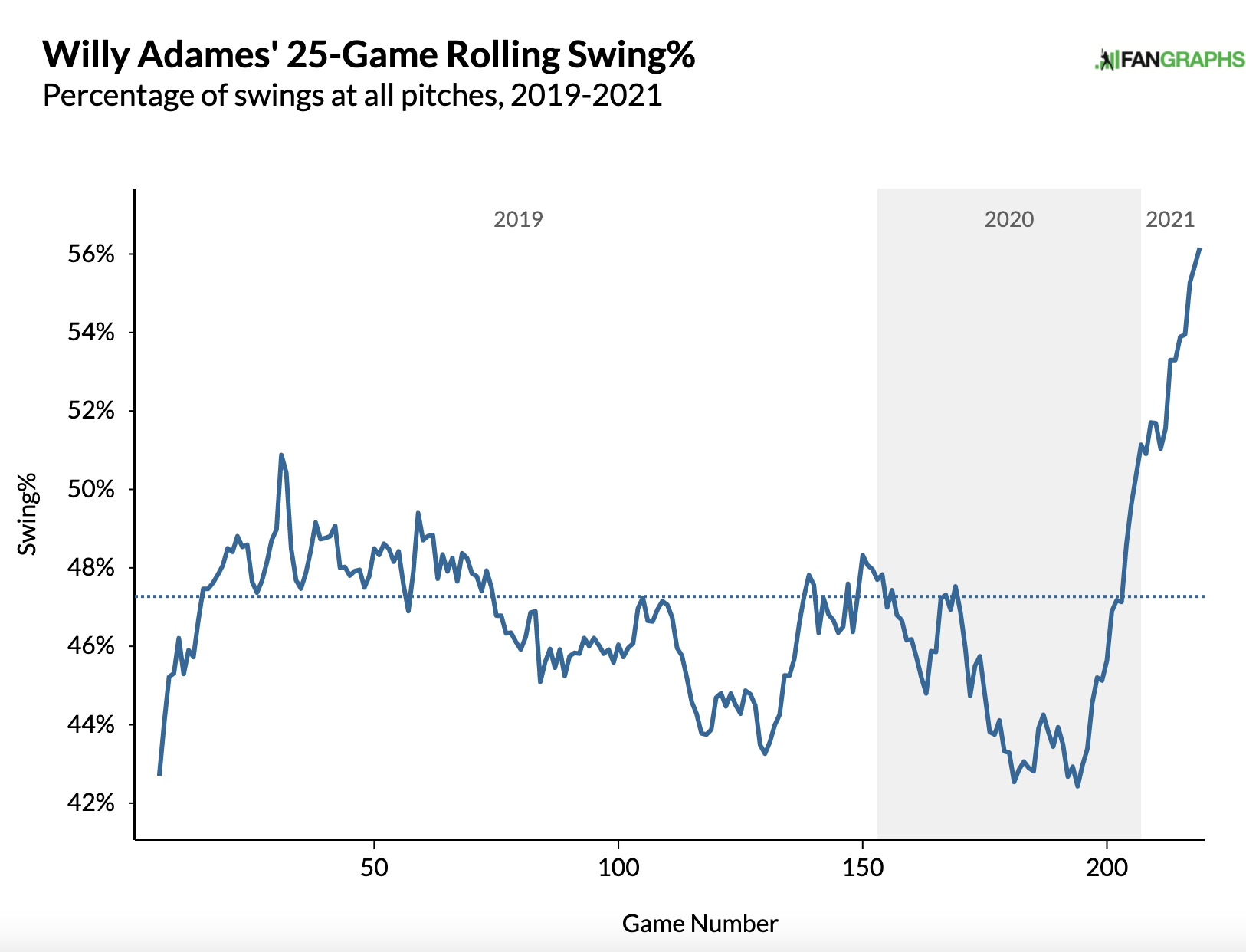
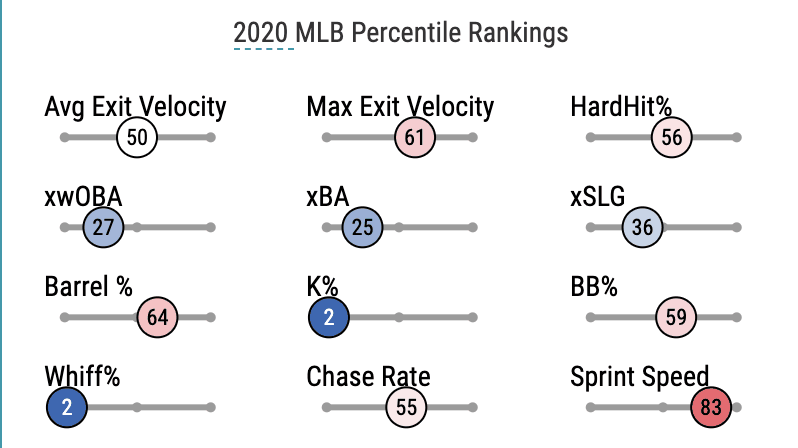
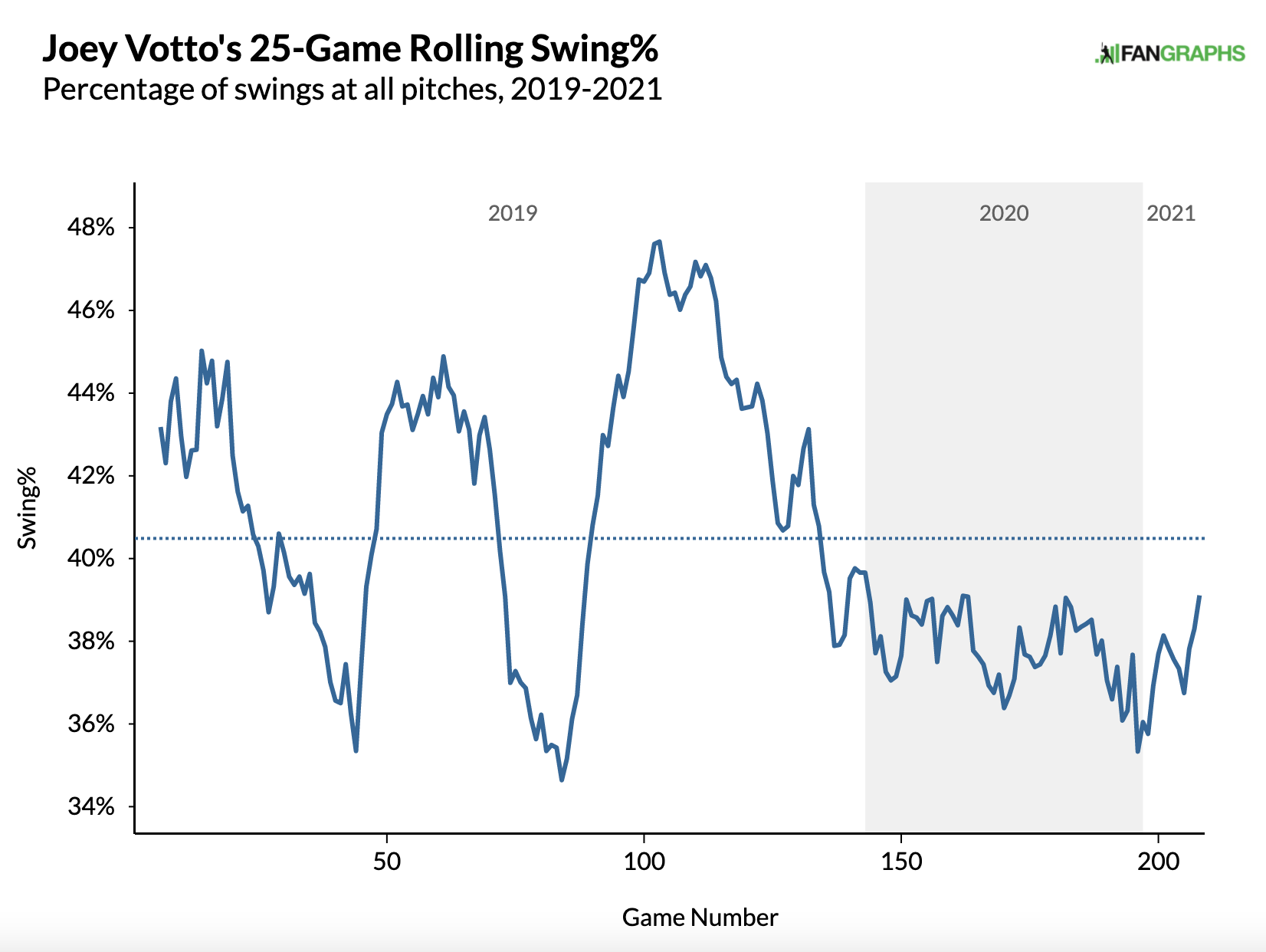
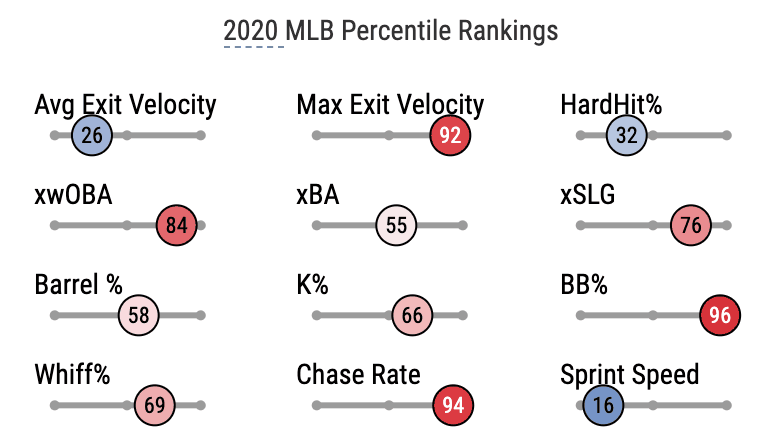
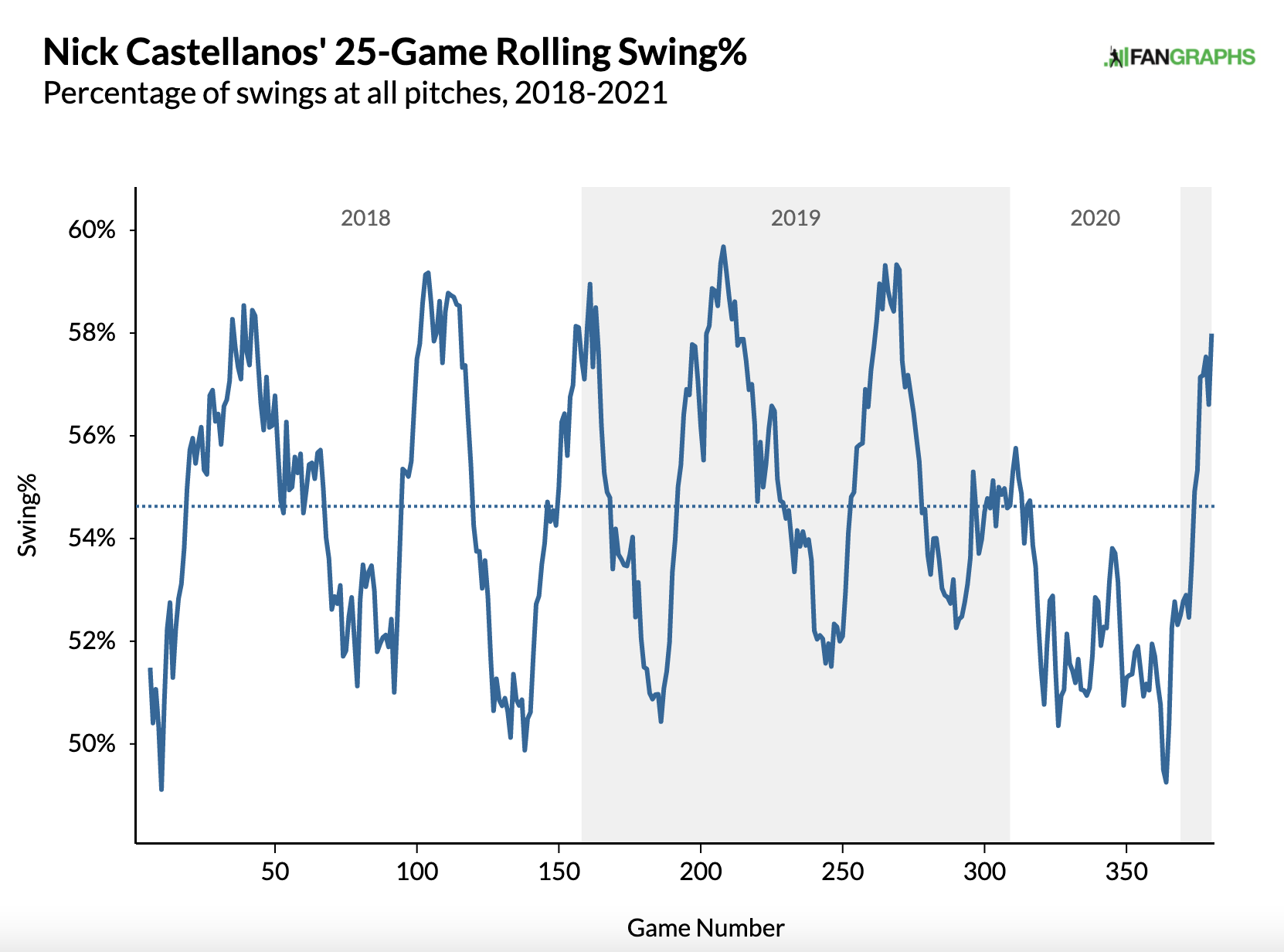
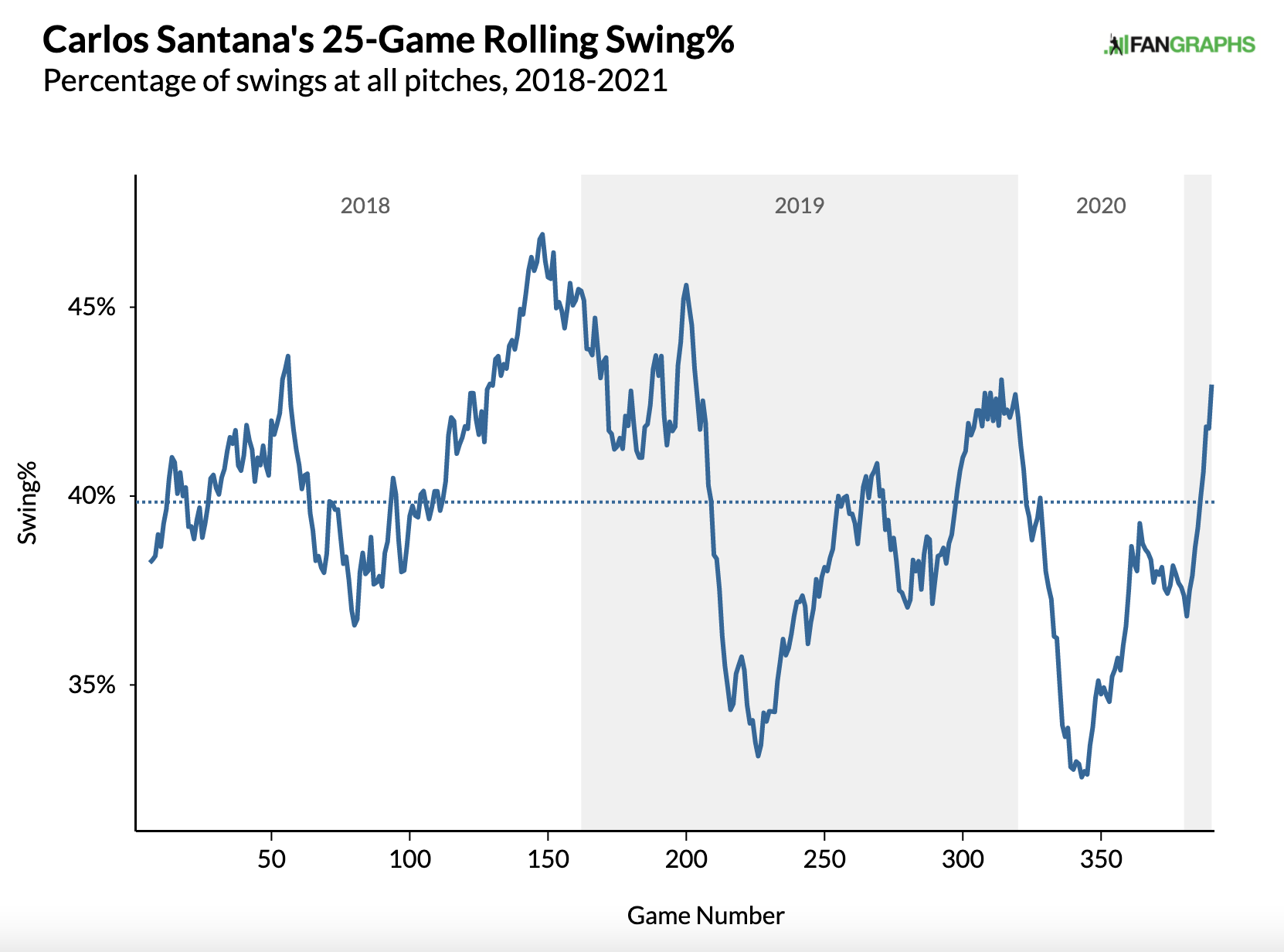
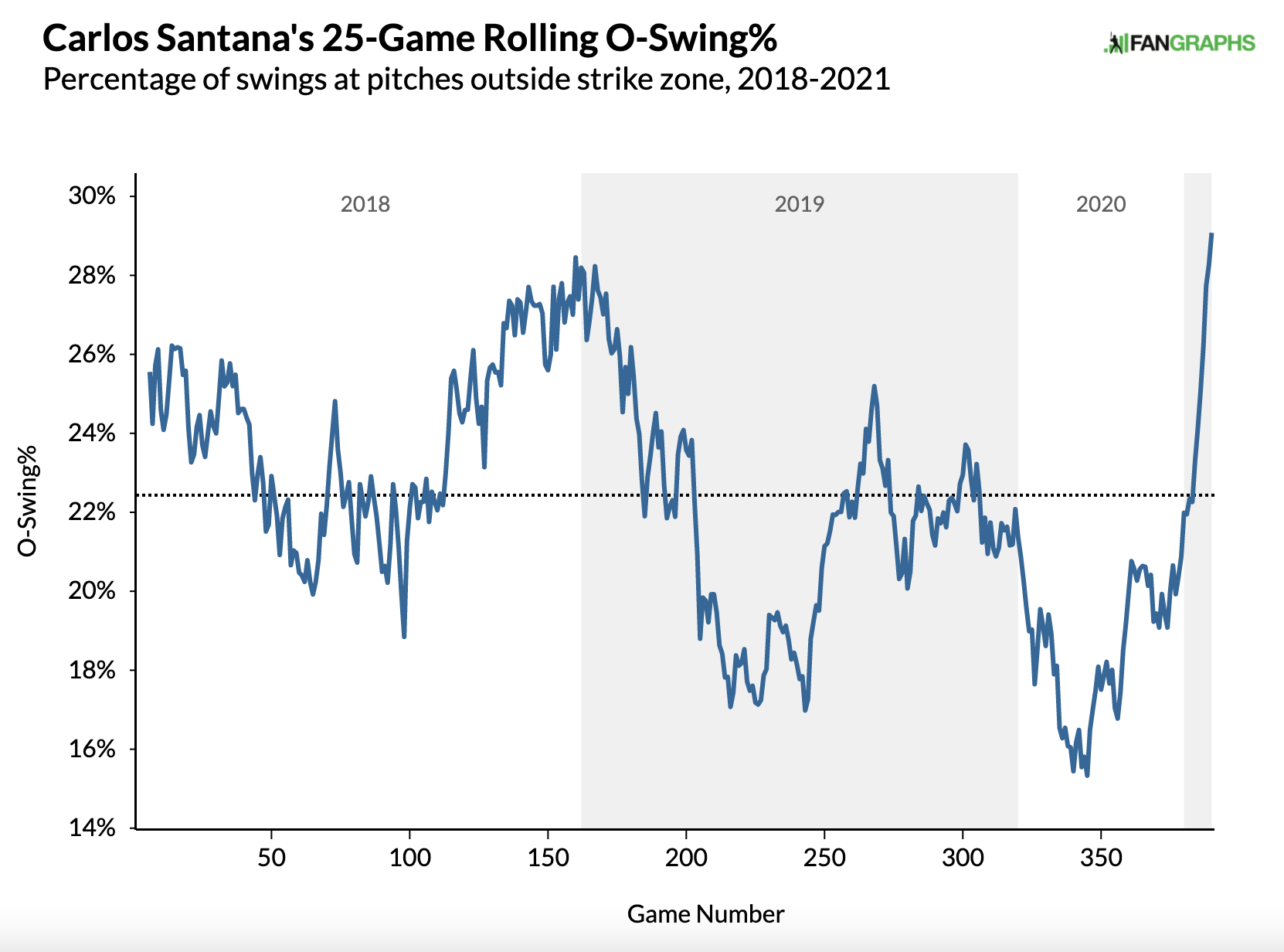
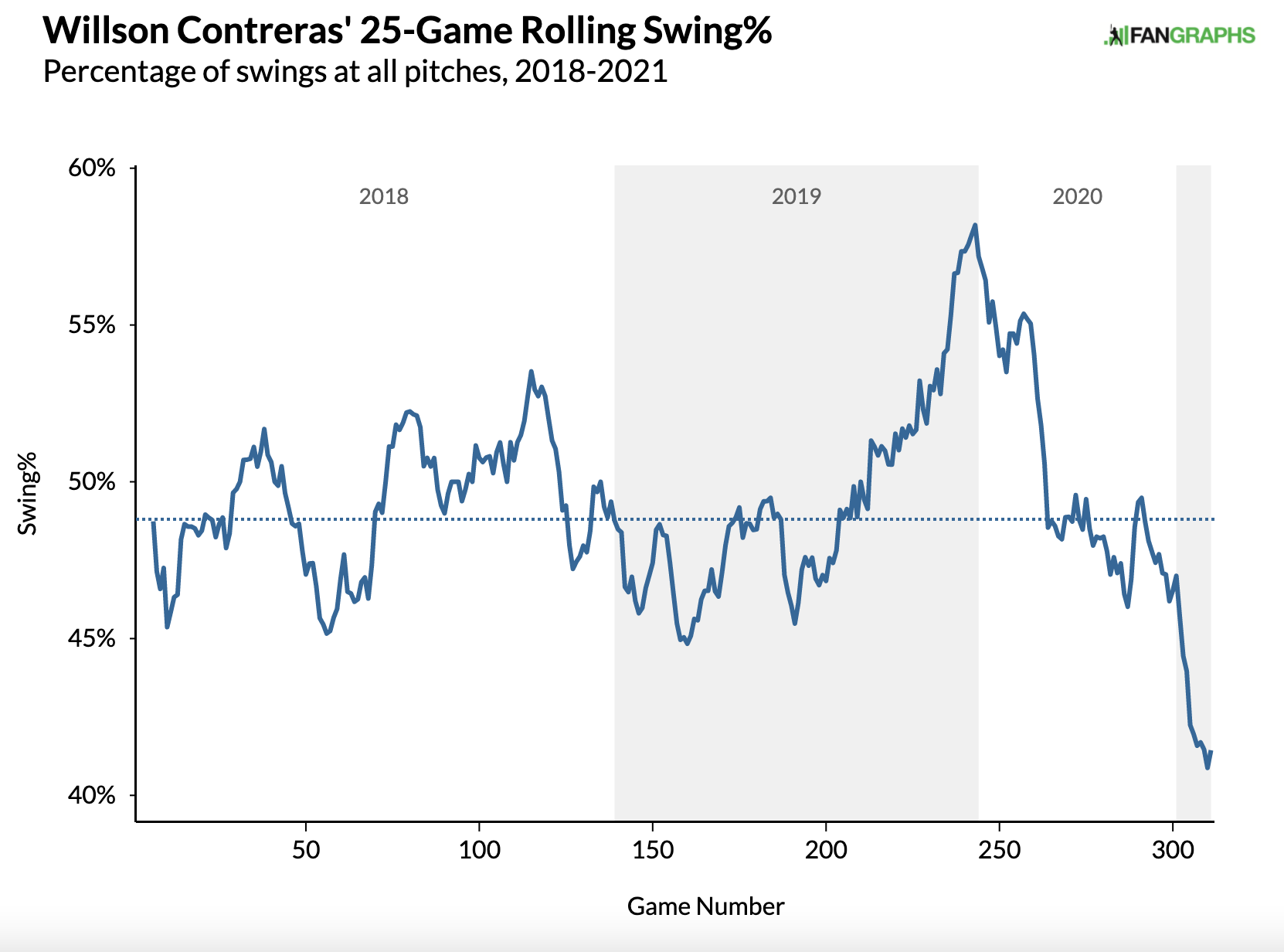
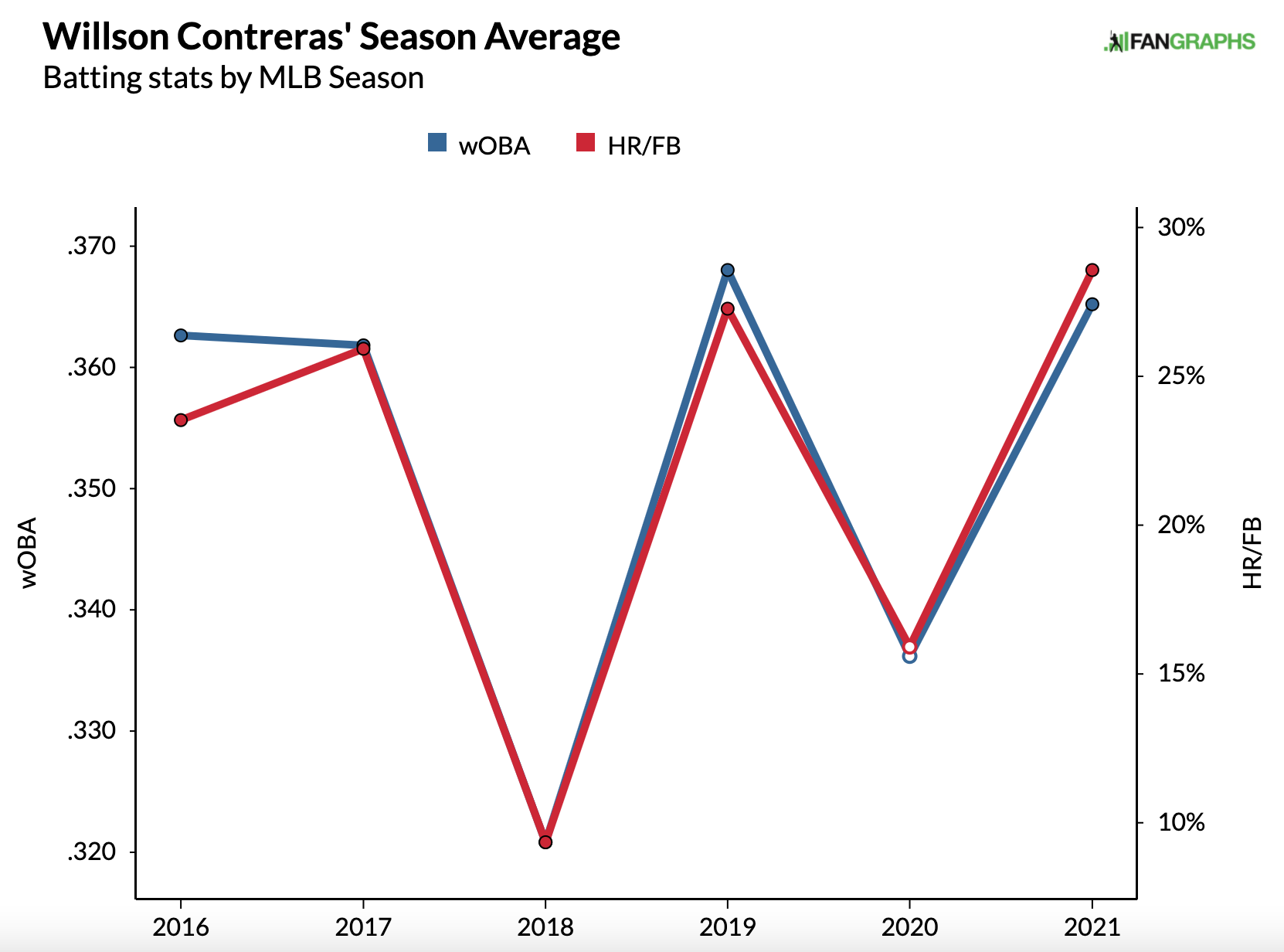
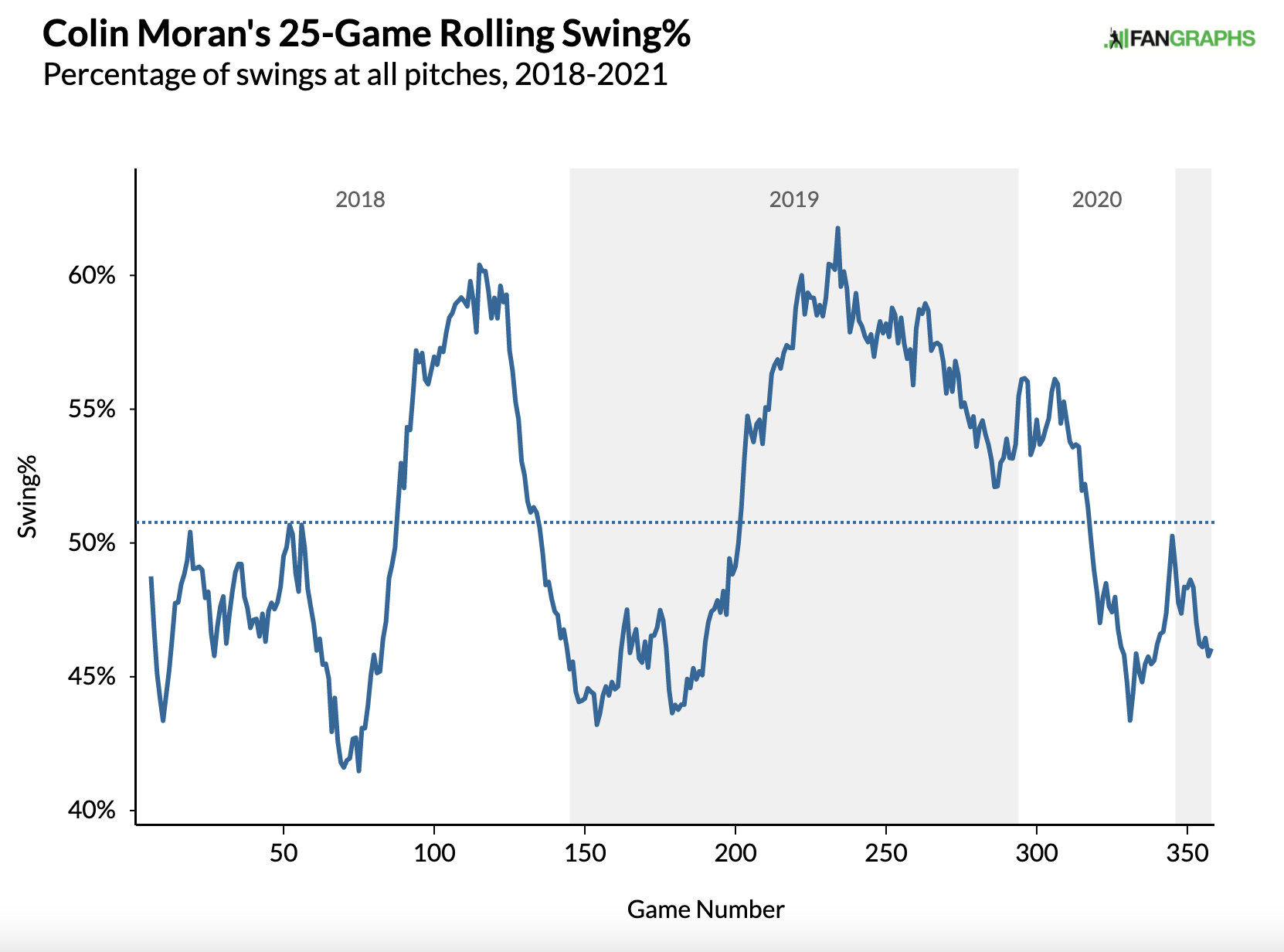
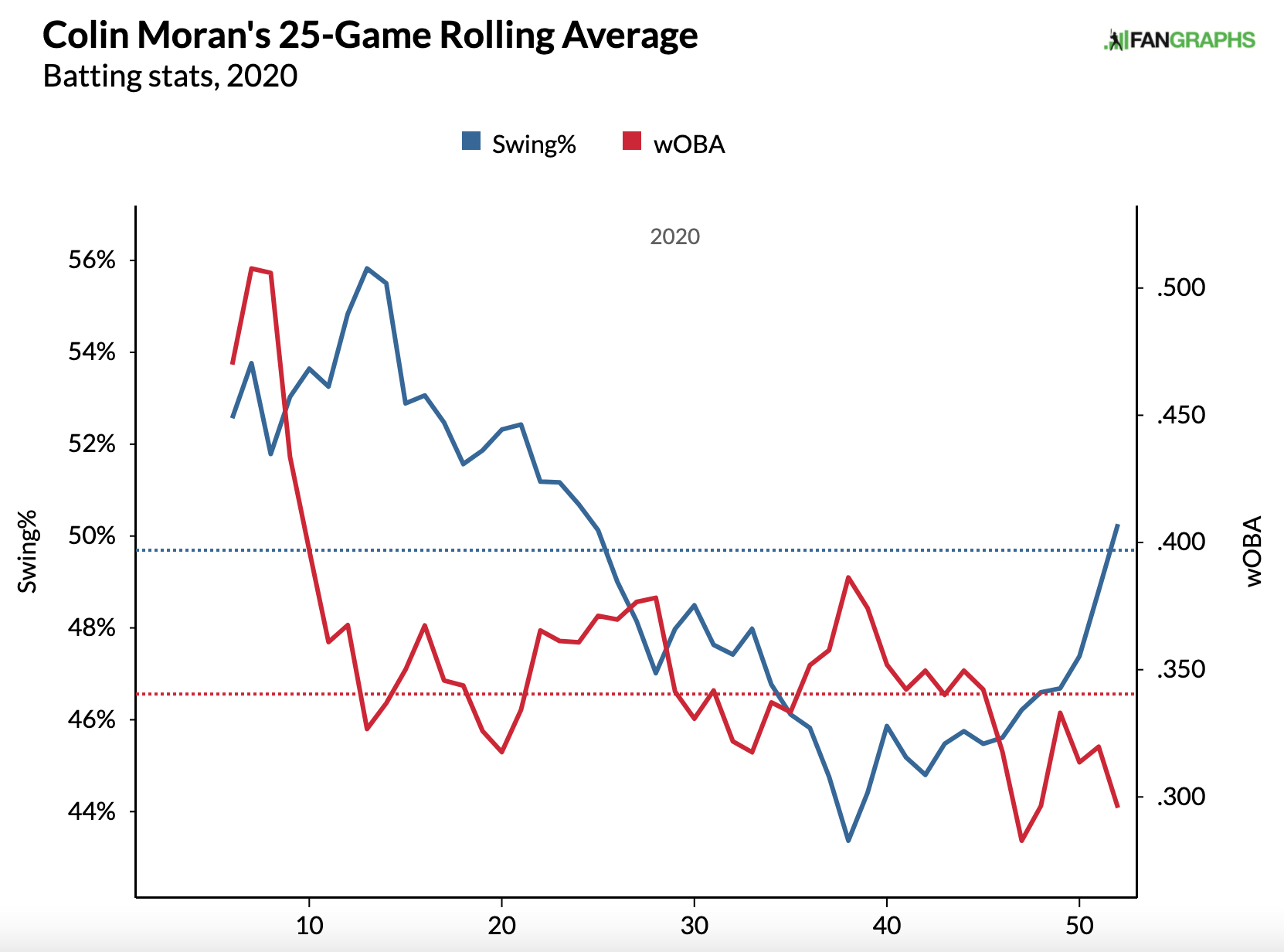
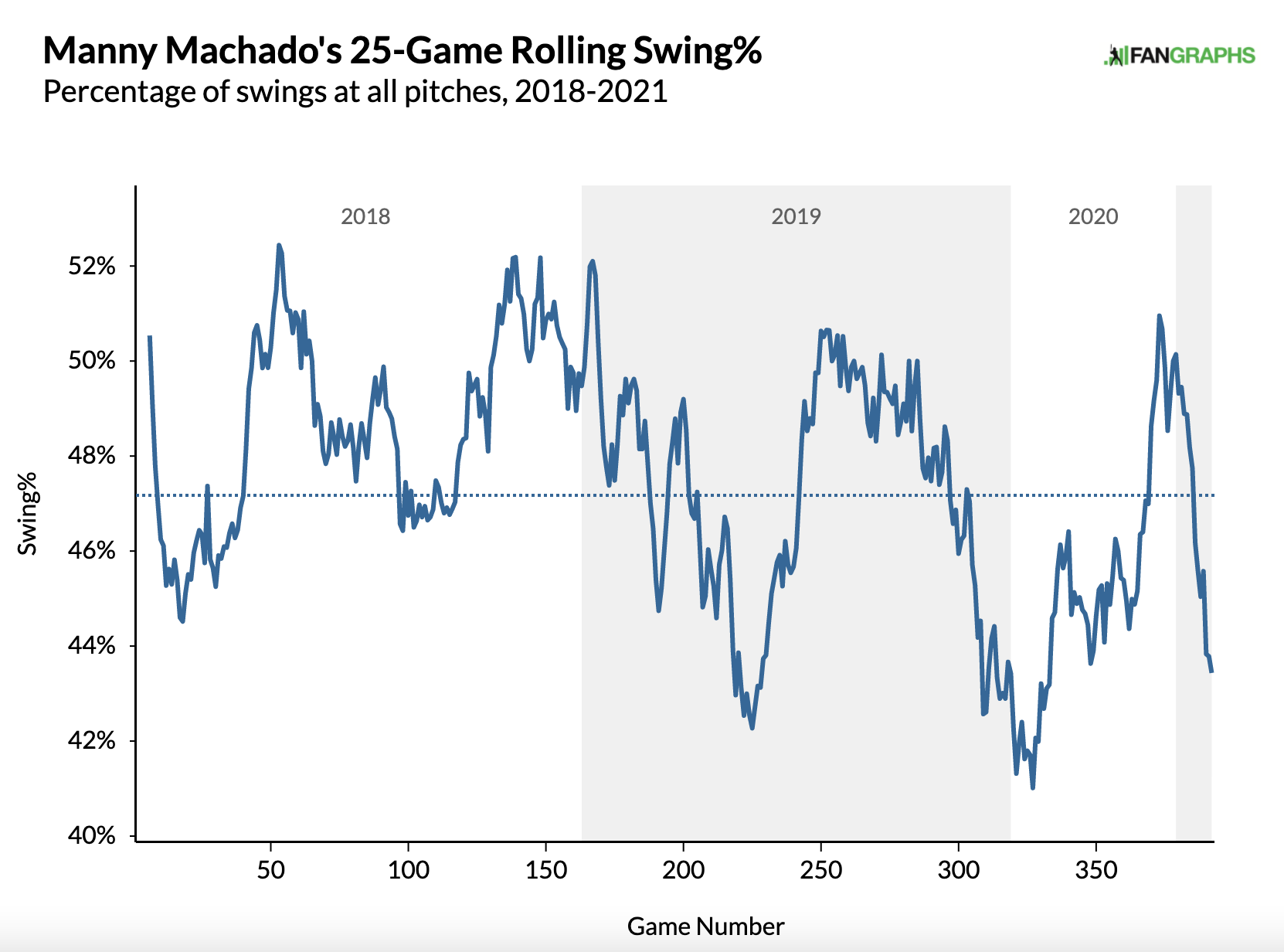
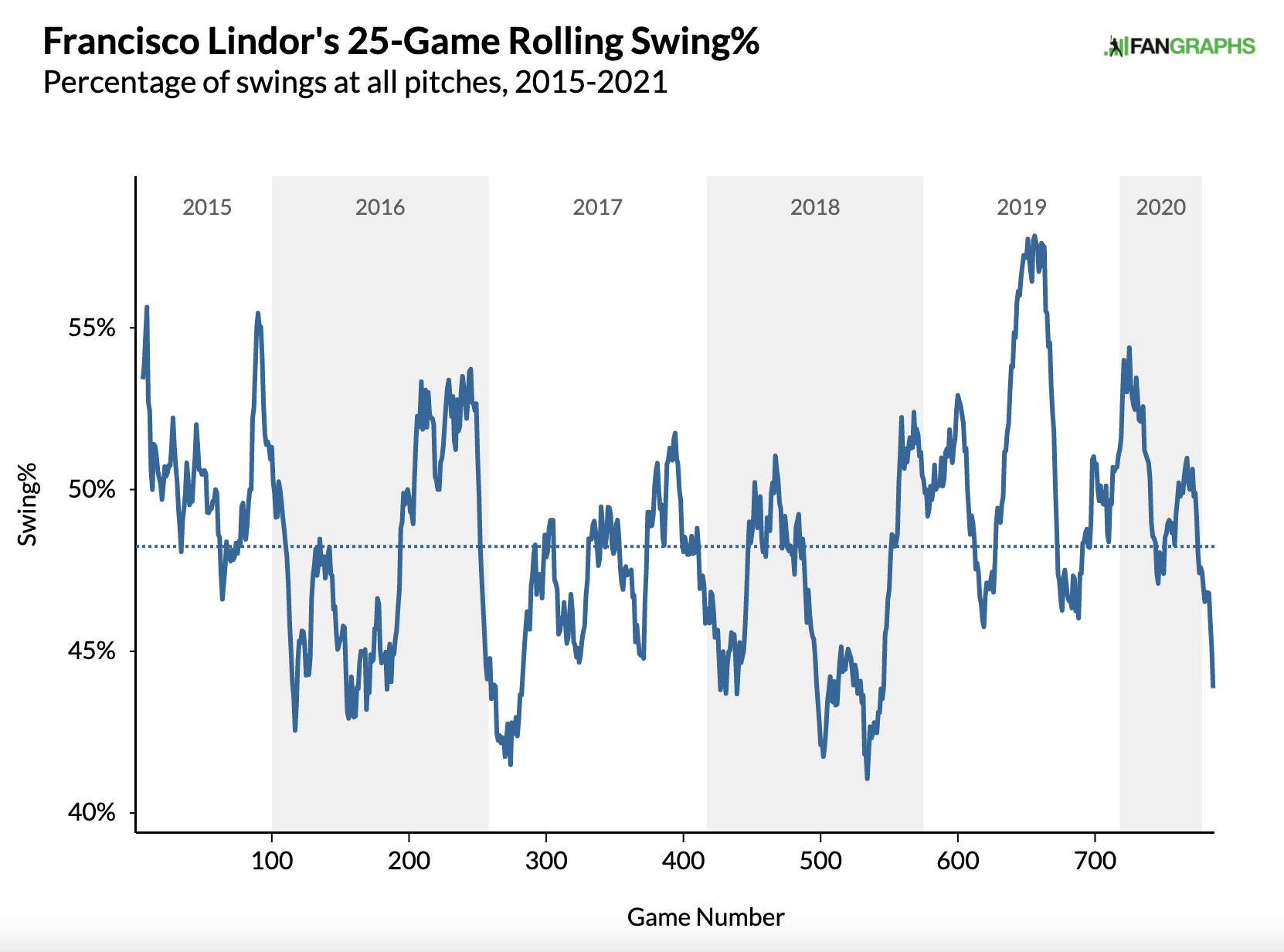
Votto’s approach is deliberate. Glad to see that the results are consistent with his approach.
“I lost some of the things, some of my strengths I came to the league with – hitting the ball hard, specifically – hitting the ball all over the field with power, being difficult to defend and I did that in exchange for command of the strikezone, putting the ball in play, being a tough at-bat, and it zapped my power,” Votto continued. “In ’17 I played really, really well because I had that nice combination of low strikeouts, tons of power, lots of walks – it was the dream season of course, for me. I stuck to that the last couple of years – in ’19 a little bit, especially last year I had to let that go and get back to what got me to the league. The adjustments I made last year after the benching were very, very natural to me. I’ve kind of always hit the ball like that, stood up taller and I’m back to a more comfortable place in terms of hitting. It’s going to come with some more swings and misses and more strikeouts, but as long as I’m productive and as long as I’m dangerous at the plate, it’ll pay itself off.”
From:
https://www.redlegnation.com/2021/02/22/joey-votto-looks-to-hit-for-more-power-with-the-cincinnati-reds-in-2021/